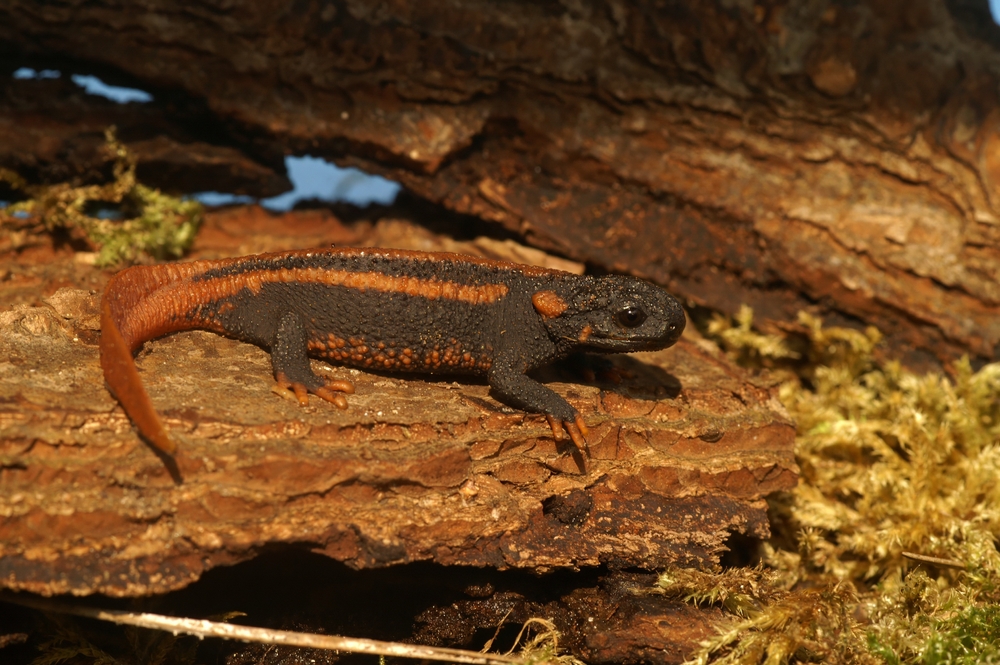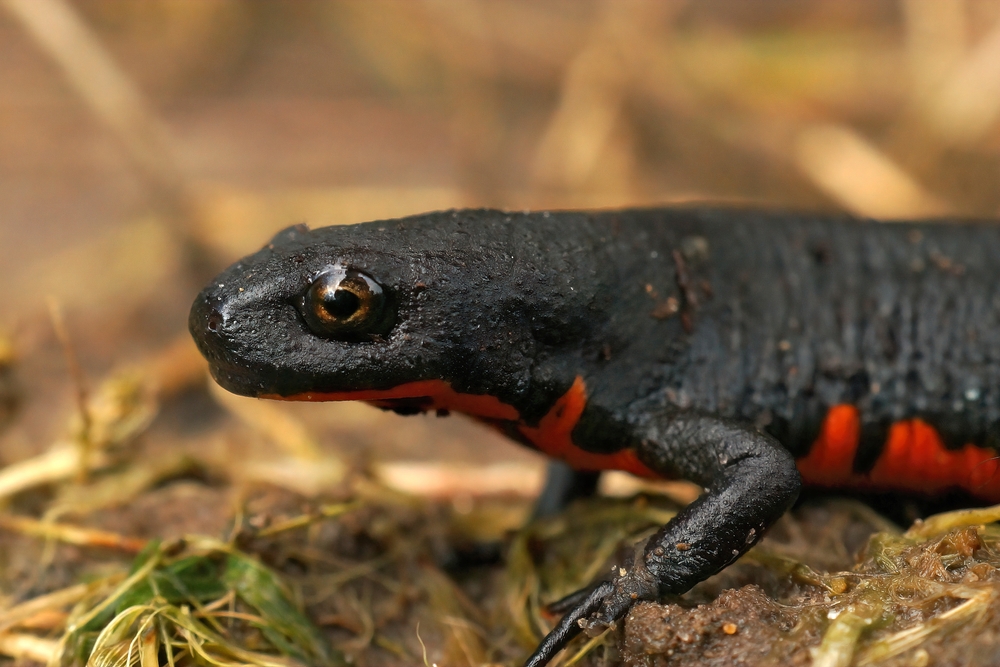Uniqueness
Knobby Armor and Crocodilian Appearance:
The Red-tailed knobby newt (Tylototriton kweichowensis) stands out visually for its rugged, prehistoric look. Its body is lined with knobby orange glands, creating the appearance of armored ridges, much like a miniature crocodile. These bony-looking structures are actually parotoid and costal glands that secrete toxins for defense.
Bright Red Tail Warning Signal:
Unlike many amphibians that rely on camouflage, this newt features a vivid reddish-orange tail, which acts as an aposematic signal—a visual warning to predators that it is toxic or unpalatable. When threatened, the newt may elevate or expose its tail as a deterrent.
Toxin-Secreting Glands:
The skin glands lining the back, sides, and tail excrete mild neurotoxins when the newt is stressed or attacked. While not dangerous to humans through casual contact, these toxins are effective against many would-be predators like snakes and birds.
Endemic and Environment-Specific:
This species is endemic to a small range in Guizhou Province, China, making it geographically rare. It thrives in montane forests with seasonal wetlands, relying on precise environmental conditions—cool temperatures, high humidity, and clean water.
Combination of Terrestrial and Aquatic Traits:
The Red-tailed knobby newt is semi-aquatic, but leans more terrestrial than many other salamanders. It forages on land and only returns to water for reproduction. This flexible life cycle allows it to navigate complex forest ecosystems.
Conservation Concern and Scientific Interest:
Due to habitat loss, pollution, and illegal collection for the pet trade, Tylototriton kweichowensis is considered vulnerable or near threatened. Its unique appearance and evolutionary lineage have made it an object of conservation focus and biological research, especially in studies of amphibian defense systems and regeneration.
Summary:
The Red-tailed knobby newt is a visually stunning and biologically fascinating amphibian, blending armor-like glandular ridges, a bright warning tail, and chemical defenses in one compact body. Its restricted range, specialized habitat needs, and distinct crocodilian features make it one of the most unique and conservation-worthy newts in the world.




































































